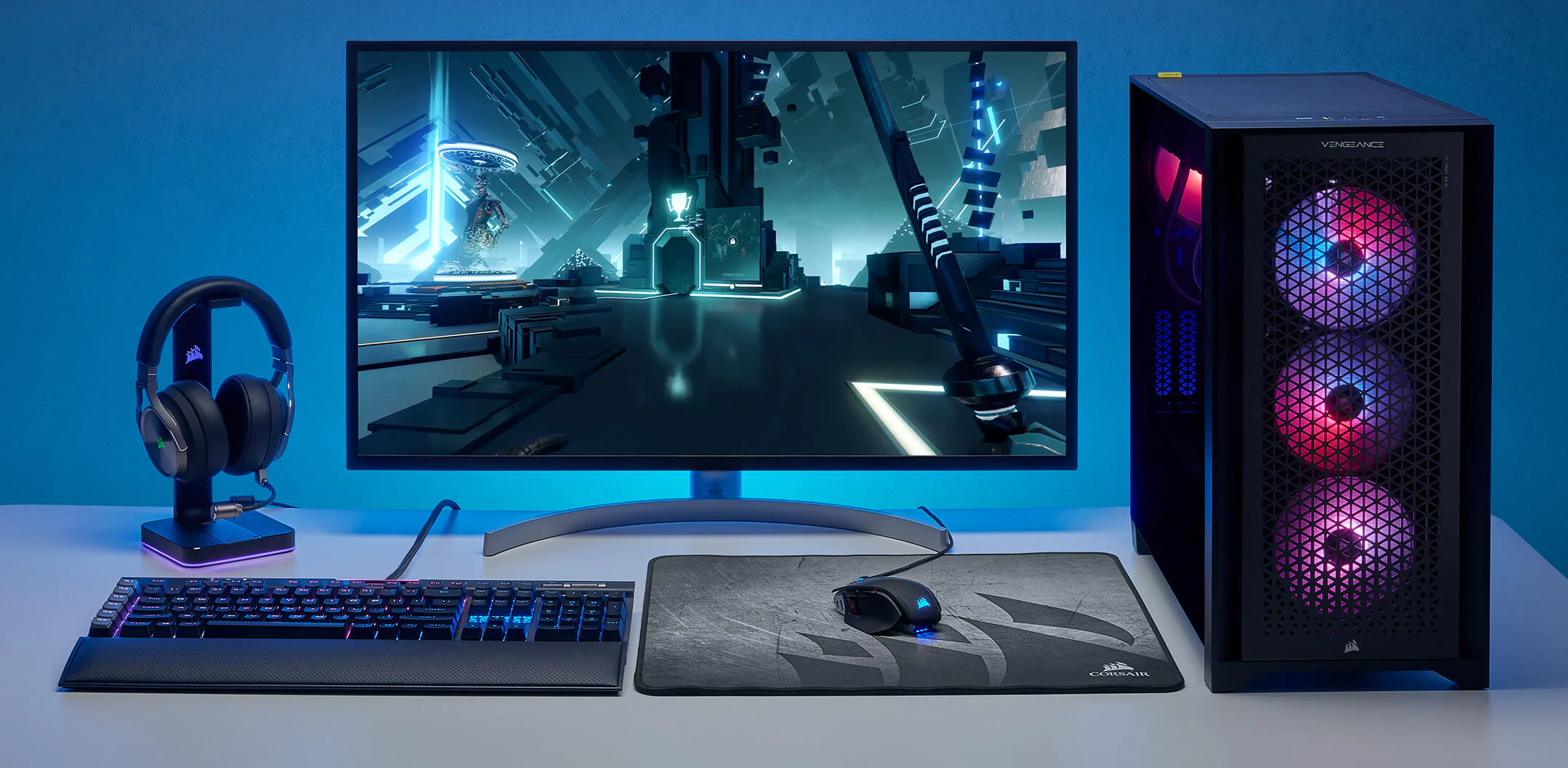Key Takeaways
- Each component plays a vital role in gaming performance and overall system longevity, with no single part being more important than the sum of the whole.
- Effective balancing of hardware ensures optimal results, even within budget constraints. Overspending on one component while neglecting others often leads to diminishing returns.
- Staying updated on recent advancements gives you a competitive edge and better in-game experiences. Newer technology may also offer improved energy efficiency and enhanced quality of life, such as reduced noise levels or faster load times.
Selecting the right gaming PC is a crucial decision, whether you’re upgrading an existing system, building one from scratch, or purchasing a pre-built system. The contemporary gaming landscape is more demanding than ever, with new releases requiring robust performance to deliver the best visuals, fastest frame rates, and smooth multitasking for streaming or content creation. To ensure a smooth, immersive experience that stands the test of time, you need to consider more than just flashy cases and RGB lighting. Understanding the inner workings of today’s gaming PCs can help you make an informed choice, avoid common pitfalls, and maximize your gaming performance for years to come.
Modern games push hardware to its limits, requiring robust CPUs, advanced GPUs, ample memory, and fast storage to handle high-end graphics and complex worlds. Balancing the budget with performance remains key. With rapid hardware advances, understanding impactful features helps prioritize spending and ensures future upgrades without full system replacements. Whether you’re an esports enthusiast or a casual gamer, matching your PC specs with your expectations and game types is crucial.
Focus on both the power and the flexibility of each component. Performance bottlenecks resulting from unbalanced builds decrease frame rates and increase load times, whereas a well-chosen system offers smooth gameplay, enhanced multitasking capabilities, and extended longevity. Investing in upgradable parts and efficient cooling systems extends your PC’s lifespan, allowing you to enjoy new releases without frequent overhauls. Extras like connectivity and ergonomic case design enhance daily use and maintenance.
This guide covers processors, graphics, cooling, and connectivity, helping you select the ideal system.
Processor (CPU)
The processor is the central hub for all your system’s calculations and logic operations, acting as the “brain” of your PC and influencing everything from gaming performance to multitasking productivity. For gaming, a strong CPU, such as the Intel Core i7/i9 or AMD Ryzen 7/9, ensures smooth frame rates, quick game loads, and support for the latest engines and features across the majority of new releases. More cores and higher clock speeds benefit users who stream, record, or edit content while gaming, enabling them to multitask with demanding software while maintaining responsive and lag-free gameplay. Look for CPUs compatible with recent chipsets for advanced connectivity and expansion options, as modern platforms often unlock features such as PCIe Gen 5, faster RAM, and improved I/O, enabling future upgrades. If you plan to use your PC for tasks such as 3D rendering, software development, or video editing, investing in a top-tier processor becomes even more worthwhile. Proper pairing with a compatible motherboard and sufficient cooling will further ensure stable operation and longevity for your build.
Graphics Card (GPU)
The graphics card is arguably the most crucial component for gaming. It directly impacts your ability to enjoy visually stunning, high-resolution graphics and smooth frame rates. High-end cards such as the NVIDIA GeForce RTX 4070 Super or AMD Radeon RX 7800 deliver lifelike visuals with features like real-time ray tracing, DLSS/FSR upscaling, and support for high refresh rates on modern monitors. VR gaming and 4K monitors require even more power, so invest in a GPU that matches your display and performance expectations, whether you’re seeking top-tier realism or simply reliable 1080p performance. Ensure your GPU features ample VRAM, as newer games often require 8GB or more for high-resolution textures and effects.
Memory (RAM)
Sufficient RAM ensures games and applications run smoothly without lag or stuttering, enabling your PC to access temporary data and handle multiple tasks simultaneously quickly. A modern gaming system should include at least 16GB DDR5 RAM, with 32GB recommended for content creators, streamers, or those who routinely keep many browser tabs and programs open. Speed also matters — faster memory can boost minimum frame rates and make multitasking effortless, especially when switching between demanding apps. If you use your computer for tasks beyond gaming, such as digital art, animation, or large spreadsheet work, additional RAM can help prevent slowdowns and sudden crashes. Dual-channel or even quad-channel setups can further enhance bandwidth and system responsiveness; however, always verify your motherboard’s compatibility before purchasing additional memory sticks.
Storage Solutions
Quick loading times and reliable storage are vital for both operating systems and game libraries. Opt for PCIe Gen 4 or Gen 5 SSDs for rapid boot times, fast level loads, and quick file transfers. These drives offer up to four times the speed of previous generations, reducing wait times and allowing you to jump into your favorite games instantly. Consider adding traditional hard drives (HDDs) or larger SATA SSDs for backup, media libraries, or bulk storage to save money while keeping your most frequently played games on your faster drive. Hybrid storage setups are becoming increasingly common in modern PCs, offering the ideal balance of speed and capacity to meet diverse needs. Some cases include built-in mounting for additional drives, making future upgrades simpler. Ensure your motherboard has sufficient M.2 or SATA ports to accommodate your planned drives. Also, monitor thermal management for high-speed SSDs, as they can generate excessive heat under heavy load.
Cooling Systems
Thermal management has a direct impact on system stability, reliability, and the lifespan of your components. Efficient cooling ensures that your CPU and GPU can operate at their intended clock speeds for longer periods, maximizing performance and minimizing throttling. Air coolers with high-quality heat sinks and large fans are suitable for most builds, such as those from brands like Noctua and be quiet!. They are known for calm, effective cooling. Liquid cooling offers a quieter operation and more efficient heat dissipation for high-performance setups, particularly with CPUs and GPUs that generate excessive heat during sustained workloads. Remember, proper case airflow — achieved through intake and exhaust fans — prevents thermal buildup and keeps your hardware performing at its peak. Dust filters, cable management, and fan control software are additional features that can simplify regular upkeep and further extend the life of your components.
Power Supply Unit (PSU)
The PSU delivers clean, consistent electricity to your components — a foundation for both performance and safety. High-performance systems, especially those with powerful GPUs, should use at least an 850W, 80+ Gold-rated PSU to provide future headroom and more stable voltage. Efficiency ratings help reduce both operating costs and heat output. Less heat inside your case means quieter fan profiles and greater part longevity. Sleeved cables and modular designs also facilitate neat cable management, enhancing airflow and aesthetics, making it easier to perform hardware upgrades or maintenance down the line.
Connectivity and Ports
Comprehensive connectivity is essential for modern peripherals, VR headsets, and external storage technologies. Ensure your PC includes enough USB 3.2 ports for controllers, headsets, mice, and external drives; having at least one USB-C port is also important for future-proofing. DisplayPort or HDMI are essential for high-refresh displays, and having more than one port allows multiple monitor setups. 2.5GbE or Wi-Fi 6E provides seamless, low-latency online gaming and faster downloads. At the same time, Bluetooth 5.0 or higher enables lag-free connections to modern wireless devices, such as gamepads, audio equipment, and keyboards. An accessible front-panel I/O can also save you time and hassle, especially for devices that you frequently connect and disconnect.
Upgradability
A forward-looking PC build should offer extra RAM slots, M.2 connectors for more SSDs, and a spacious case for future GPU or cooling upgrades. Select a motherboard with robust support for new CPUs and downward compatibility; this extends your system’s relevance as hardware advances, meaning you can often upgrade individual components rather than replacing the entire PC. Modular power supplies, easy-access drive bays, and tool-less case designs streamline the upgrade process and reduce the headache of future improvements. Plan for extra wattage in your PSU, and leave room inside your case for larger GPUs or additional fans as new hardware standards arrive. This philosophy keeps your investment relevant for longer, helping you enjoy new releases with fewer interruptions and lower long-term costs.
By focusing on these essential features, you ensure your gaming PC provides robust performance and evolves with your needs.
Conclusion
Choosing the right gaming PC comes down to striking a balance between performance, longevity, and budget. Each component — from CPU and GPU power to RAM, storage, and cooling — plays a crucial role in ensuring smooth gameplay and multitasking without bottlenecks. Prioritizing upgradability and efficient cooling will also help future-proof your system, allowing you to keep pace with advancing hardware and more demanding games. By focusing on the features that matter most, you can build or buy a machine that delivers an immersive experience today while remaining adaptable for tomorrow’s gaming needs.








